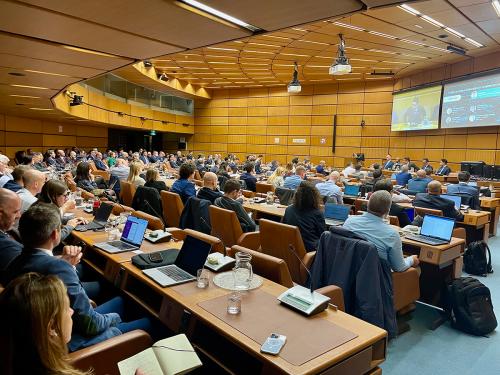Identifying key criteria for successful Collective Action initiatives

On Wednesday, 19 April 2017 the Basel Institute in cooperation with Norton Rose Fulbright hosted an insightful discussion as to how to develop a successful anti-corruption Collective Action with peer companies or other stakeholders and how Collective Action can invigorate anti-corruption programmes in markets with systemic corruption.
Recent examples of Collective Action were discussed, including the Extractive Industries Transparency Initiative, the Banknote Ethics Initiative and the Tainted Assets Working Group. Panelists gave practical insight into the development of these initiatives and what they see as indicators of success. The panelists included
- Mark Pieth - founder of the Basel Institute on Governance
- Karina Litvack - Chair of the Tainted Assets Working group
- Antti Heinonen - Chairman of the Banknote Ethics Initiative
- Gonzalo Guzman - Director of Governance and External Engagement Anti-Bribery and Corruption CoE Global Ethics & Compliance at GlaxoSmithKline
- Dr Elizabeth David-Barrett - Senior Lecturer in Politics at the University of Sussex
A focus of discussion was identifying key criteria to consider for a successful Collective Action initiative - such as:
- the degree of commitment required from members;
- the benefits that accrue to only those members;
- other material and reputational benefits;
- the importance of monitoring that members adhere to the agreed rules; and
- the need for active engagement and involvement of the members in the development of the initiative.
The panelists also highlighted the benefits of taking part in a Collective Action initiative, particularly to address some of the systemic aspects of corruption as suggested by the Tainted Assets proposition. Collective Action as a dynamic and sustained approach was illustrated by the Banknote Ethics Initiative which is planning to expand its standards towards its customers in future. The High Level Reporting Mechanism in Colombia and the Business Ombudsman in Ukraine were cited as effective examples that address the solicitation of bribes from the private sector by public officials.
The power of Collective Action to reinforce a company’s values within the organisation was also mentioned, with one company explaining that Collective Action is part of their articulated anti-corruption strategy and this was recognised as an excellent suggestion for other companies to consider. The inspirational and motivating effect that Collective Action can provide throughout the business was similarly noted. Finally, Collective Action can be a tool to work constructively with suppliers, especially small and medium sized companies in countries where corruption is a serious problem.
Find more information on Collective Action on www.baselgovernance.org/collective-action



